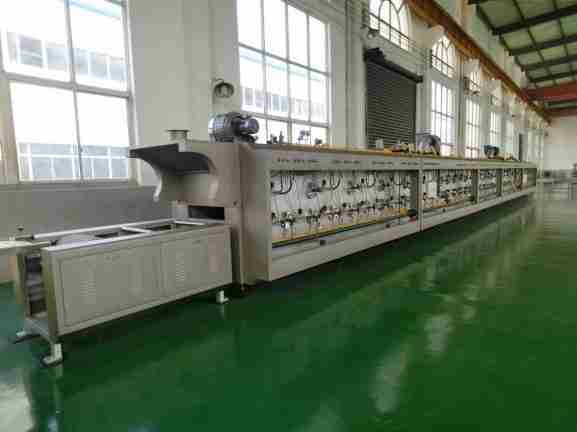How is a biscuit made? Here’s a short explanation. Ingredients, process, machines, packaging, and more. You’ll be amazed! But, what exactly is caramelisation? It’s a process in which the sugars in the dough are broken down at a high temperature. This chemical reaction results in colour and flavour development. Then, it’s packaged and sent to market!
Ingredients
Biscuits contain a variety of ingredients, including yeast, butter, and sugar. Wheat flour contains the amino acid amylose, which helps to create the characteristic brown color of crackers. Sugar contributes color and sweetness to biscuits, and helps develop their texture. Fat is another essential ingredient, especially for soft biscuits. Ammonium bicarbonate (baking soda) is a common leavening agent, and it gives biscuits more volume than the raw ingredients, without compromising on flavor.
In order to create a delicious biscuit, the correct ingredients are mixed in a mixer. The type of dough, mixing temperature, and amount of each ingredient are all crucial to ensuring a high-quality product. The dough is then placed into various stages. The dough is mixed in large mixers. In some factories, the temperature of the dough also plays an important role in the quality of the finished product. Some factories use a thermometer to monitor the temperature of the dough during this stage.
Process
In order to make biscuits, the dough must contain sufficient amounts of water, which helps the granules in the dough absorb some water and swell. This process is known as gelatinisation, and occurs when the dough reaches a temperature of 60o to 70degC. The process can continue until the starch granules are fully gelatinised. The biscuit’s colour and stiffness are both determined by the amount of water and the temperature of the dough.
The conventional process of making biscuits involves using flour, fatty substances, and sugars. The dough is then baked until it reaches a dry powdery state. The process also involves adding emulsifiers, which stabilize mixtures of immiscible liquids. These additives can improve crumb structure, texture, and loaf volume. The time at which the dough is mixed also has a major role to play in the consistency of the dough. Once the dough reaches the desired consistency, it is molded into biscuits of a desired size and shape.
Machines
There have been numerous innovations in the industry over the years and biscuits are no different. In the early 1960s, a new wave of biscuit machinery emerged. The chocolate enrober was a machine designed and built by Baker Perkins’ C+C division. You can read about the company’s history to learn more about this machine. Today, biscuit manufacturers use these machines to produce two kinds of biscuits – chocolate and plain.
The first process is forming the dough. A forming rotor is used to cut the dough ribbon into a given size or shape. It also punctures the dough ribbon to remove the gases that are produced during the baking process. A second step in the biscuit-making process is the laminator, which laminates the hard ribbon before the biscuits are made. A biscuit press is a versatile machine. It will allow you to make biscuits of a variety of sizes and shapes.
Packaging
There are several options available for packaging biscuits made in factories. In general, they are wrapped in a moisture-proof film. Printed paper or plastic skillets are also used. Both these options offer additional mechanical protection and can be used for display purposes. Another packaging operation is the production of paper board cartons. These cartons are often made of non-greaseproof materials and are sealed with strong adhesives. These cartons are often made from waste paper pulp which is cheaper than new wood pulp, but poses a hygiene hazard.
Among other reasons for using a special packaging for biscuits, the main one is aesthetic consideration. As consumers tend to purchase biscuits on impulse, the packaging should not only be attractive but also sufficiently descriptive of their contents. Furthermore, packaging for biscuits must be compliant with ever-more stringent legislations. Therefore, the essential information must be easily accessible without detracting from the attractive design features. Further, many markets require the inclusion of “sell by” and “best before” dates on biscuit packs. These dates are intended to assure consumers that the biscuits are safe to consume.





